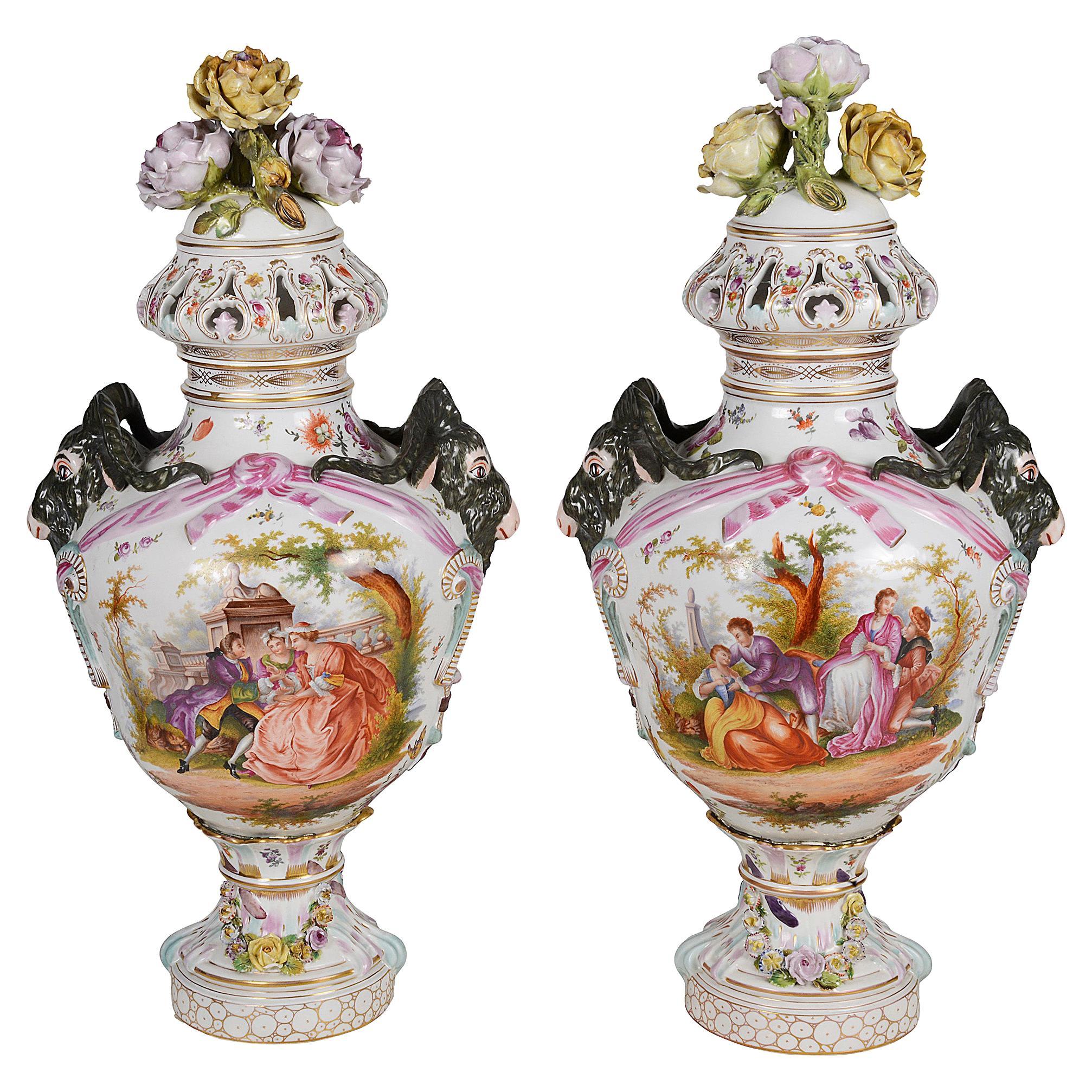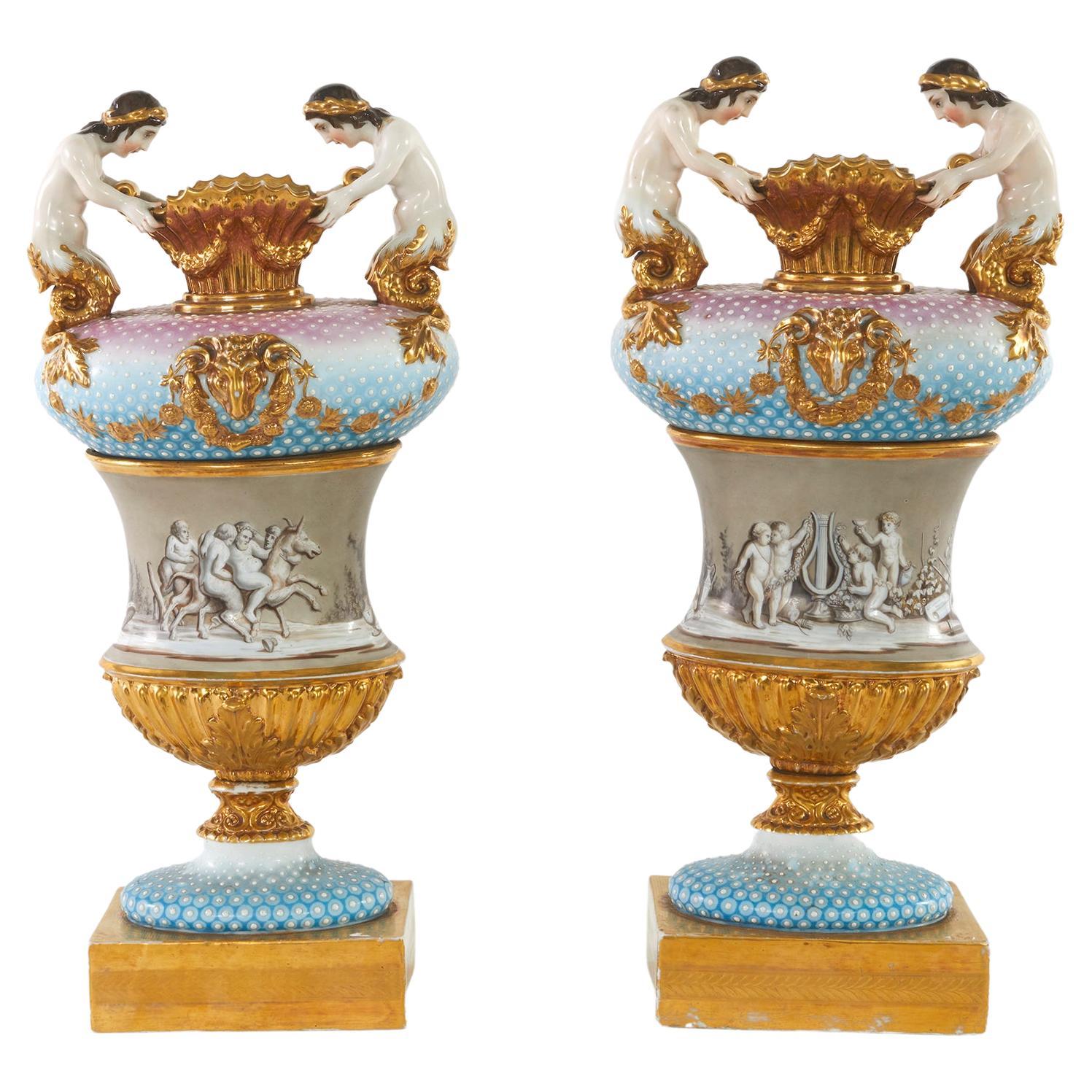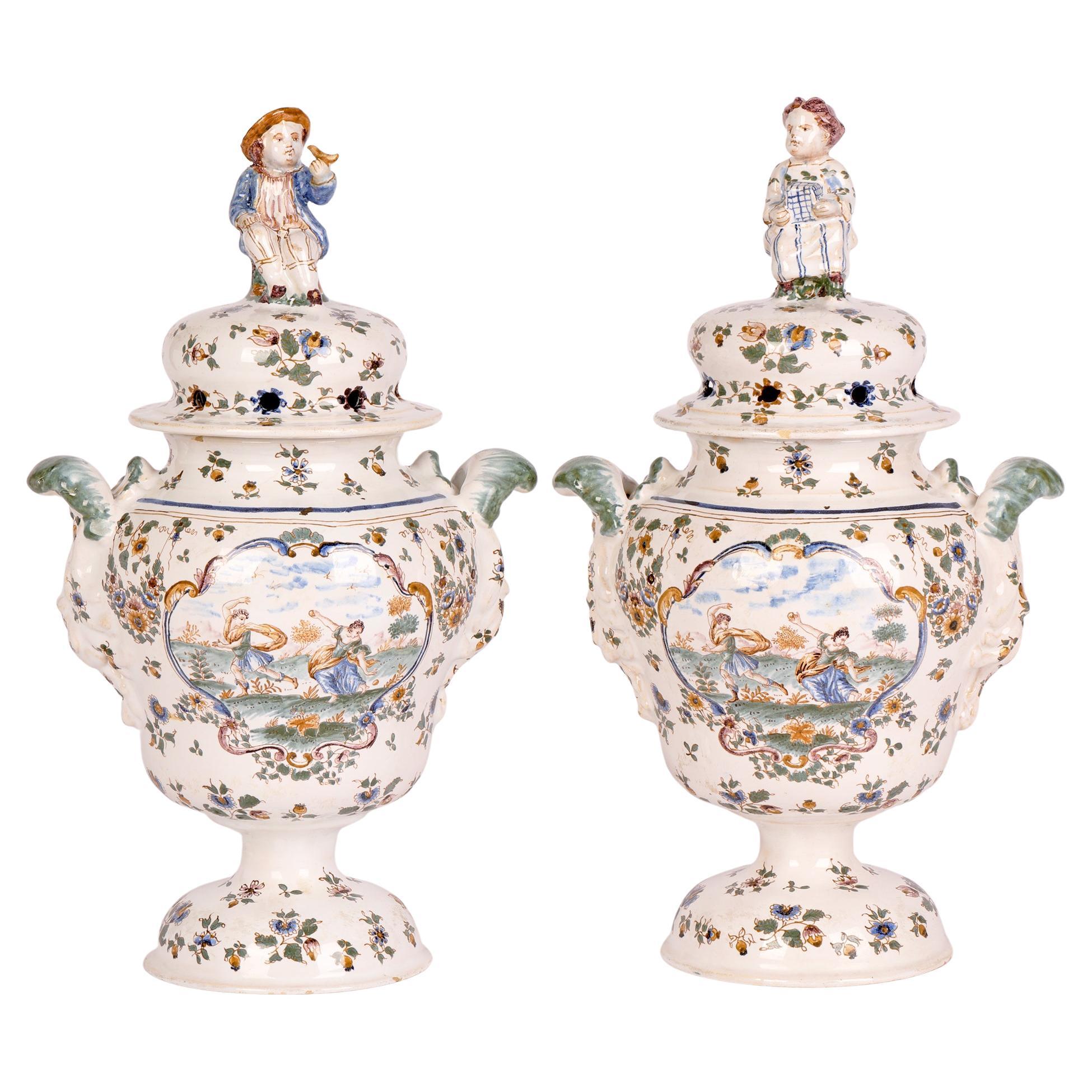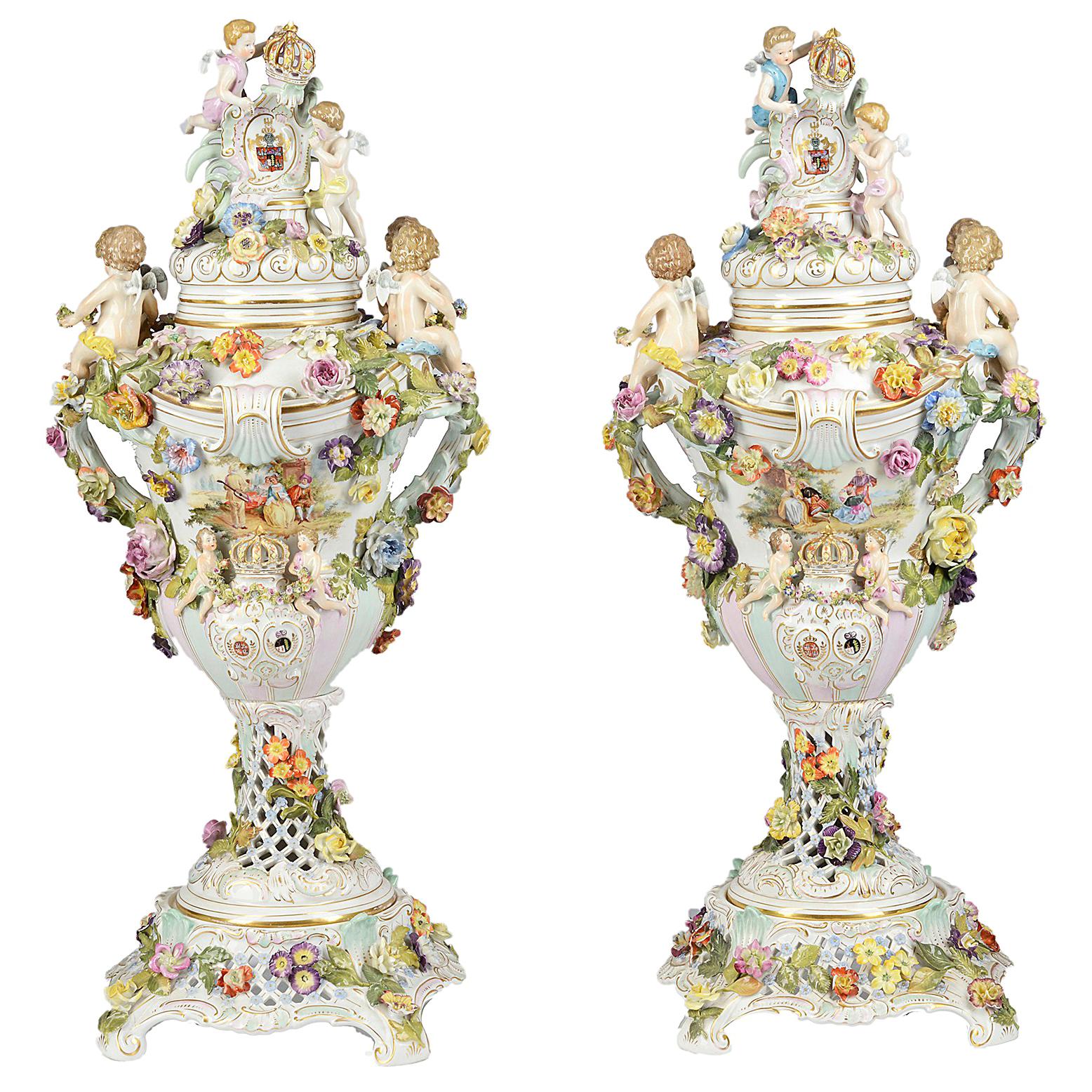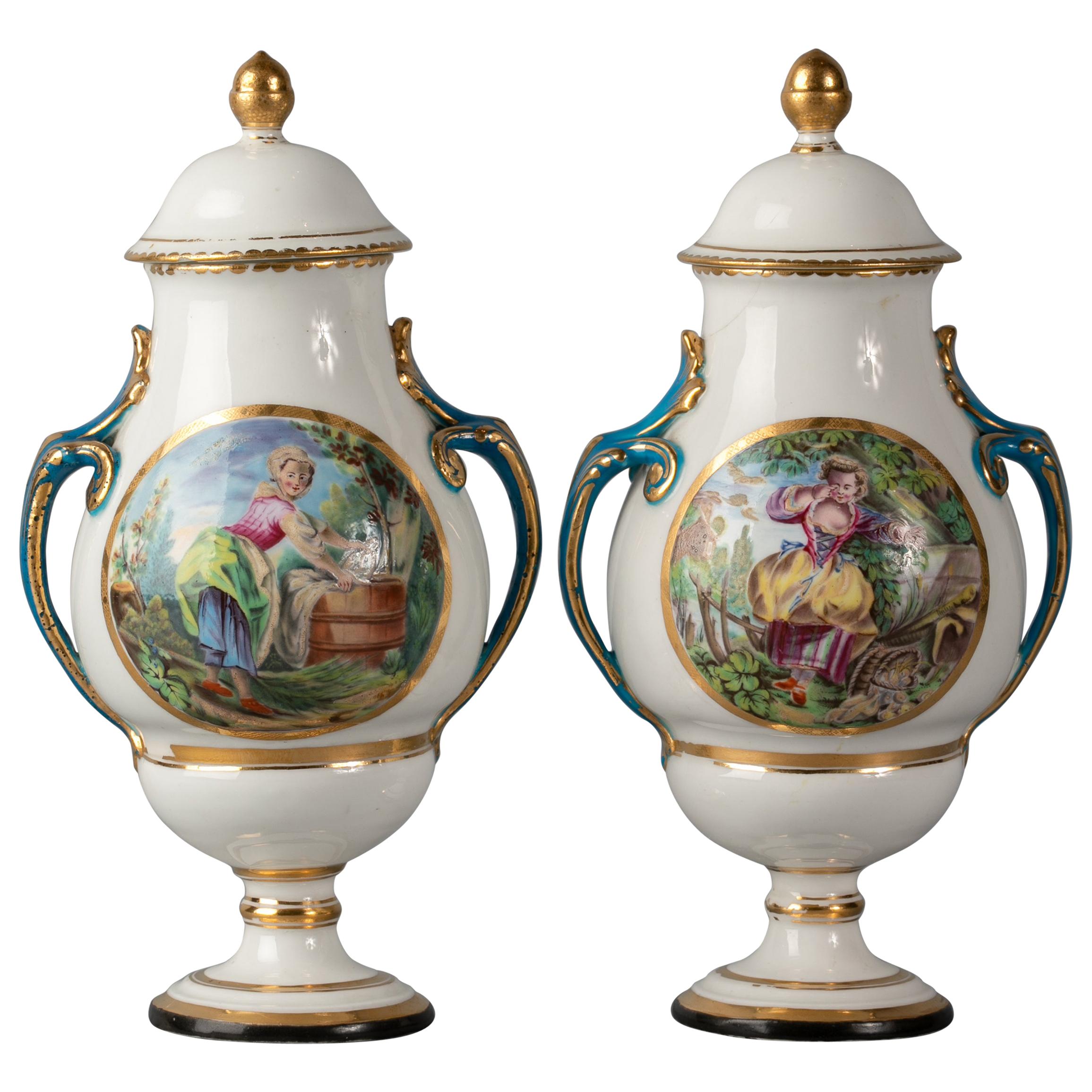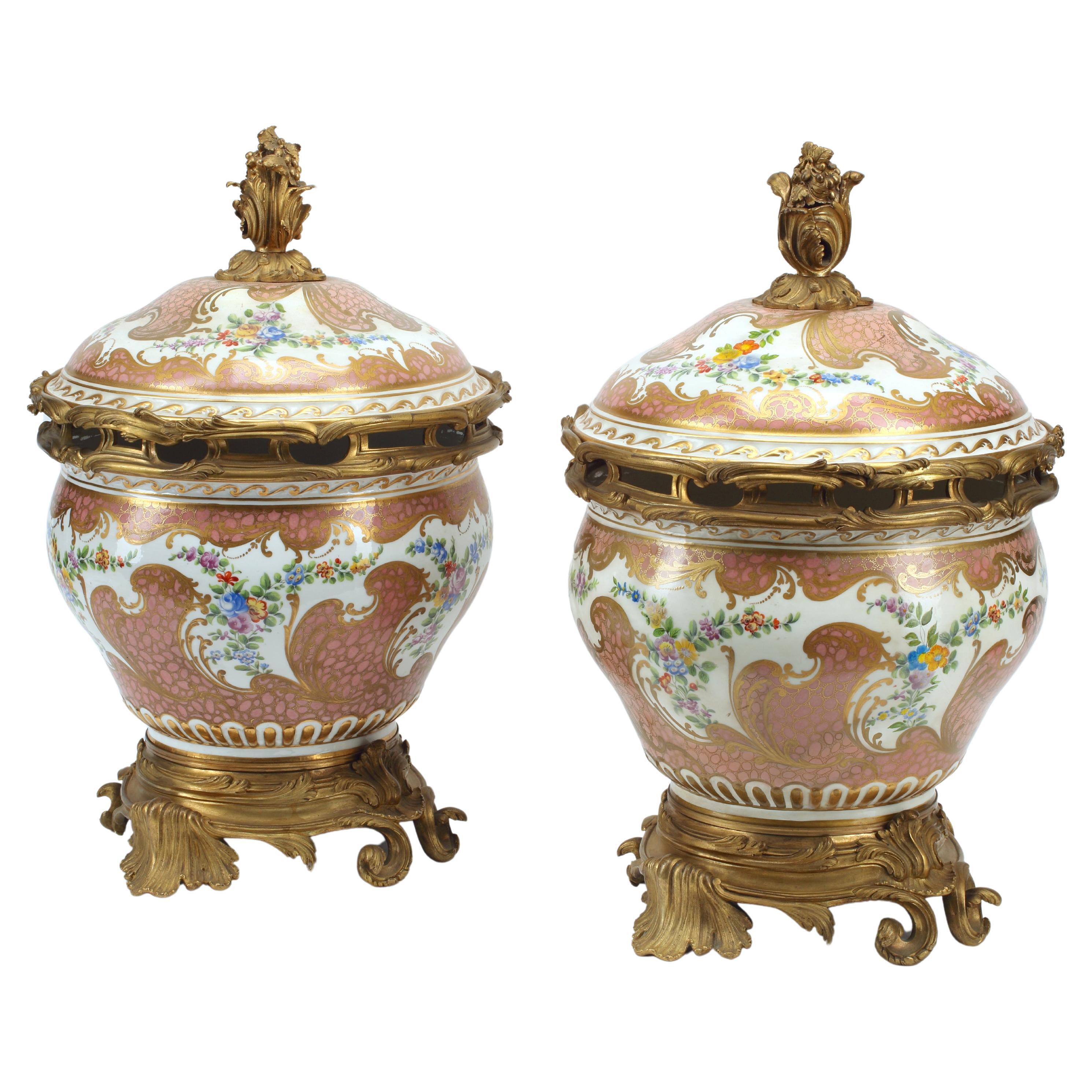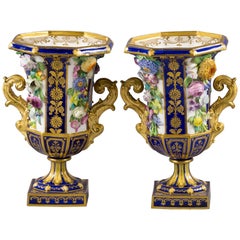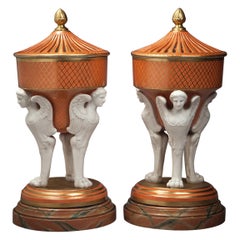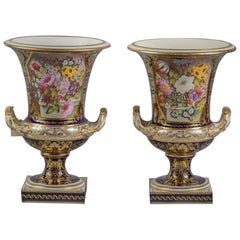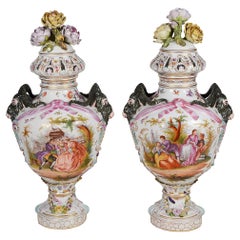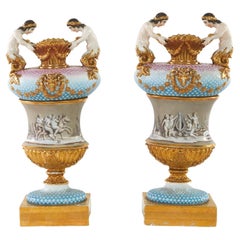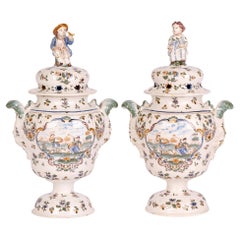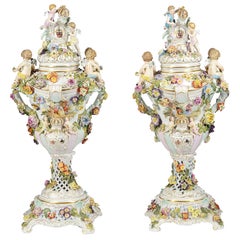Items Similar to Pair of Meissen Covered Potpourri Vases, circa 1745
Want more images or videos?
Request additional images or videos from the seller
1 of 7
Pair of Meissen Covered Potpourri Vases, circa 1745
$55,000per set
£41,773.86per set
€48,262.61per set
CA$77,084.49per set
A$86,272.04per set
CHF 45,027.37per set
MX$1,052,074.16per set
NOK 576,289.10per set
SEK 545,531.43per set
DKK 360,177.43per set
Shipping
Retrieving quote...The 1stDibs Promise:
Authenticity Guarantee,
Money-Back Guarantee,
24-Hour Cancellation
About the Item
Pair of Meissen covered potpourri vases, circa 1745.
About the Seller
5.0
Recognized Seller
These prestigious sellers are industry leaders and represent the highest echelon for item quality and design.
Established in 1940
1stDibs seller since 2015
189 sales on 1stDibs
Typical response time: 19 hours
- ShippingRetrieving quote...Shipping from: New York, NY
- Return Policy
Authenticity Guarantee
In the unlikely event there’s an issue with an item’s authenticity, contact us within 1 year for a full refund. DetailsMoney-Back Guarantee
If your item is not as described, is damaged in transit, or does not arrive, contact us within 7 days for a full refund. Details24-Hour Cancellation
You have a 24-hour grace period in which to reconsider your purchase, with no questions asked.Vetted Professional Sellers
Our world-class sellers must adhere to strict standards for service and quality, maintaining the integrity of our listings.Price-Match Guarantee
If you find that a seller listed the same item for a lower price elsewhere, we’ll match it.Trusted Global Delivery
Our best-in-class carrier network provides specialized shipping options worldwide, including custom delivery.More From This Seller
View AllPair of English Porcelain Two Handled Covered Vases, Derby, circa 1770
Located in New York, NY
Each of inverted pear shape with hemispheric lower body and raised on a circular foot, the turquoise ground handles enriched in gilt, the domed cover with gilt acorn finial, painted ...
Category
Antique 1770s English Vases
Materials
Porcelain
Pair of English Porcelain Two-Handled Vases, circa 1835
Located in New York, NY
With applied flowers.
Category
Antique 1830s English Vases
Materials
Porcelain
Pair of Covered Porcelain and Bisquit Figural Potpourri Urns, circa 1820
Located in New York, NY
On faux marble bases.
Category
Antique 1820s Urns
Materials
Porcelain
Pair of English Porcelain Campana-Shaped Two-Handled Vases, Derby, Circa 1820
Located in New York, NY
Each with large center still life panel.
Category
Antique 1820s English Vases
Materials
Porcelain
Pair of English Porcelain Claret Ground Vases, Chelsea, circa 1760
Located in New York, NY
Each finely painted on the front and reverse with Teniers-style peasants at various pursuits reserved within a shaped panel and elaborate tooled gilt border, and affixed on either side with a gilt-heightened foliate scroll handle. Chelsea gold anchor...
Category
Antique 1760s English Vases
Materials
Porcelain
Pair of English Porcelain Claret Ground Vases, Chelsea, circa 1760
Located in New York, NY
Each finely painted on the front and reverse with Teniers-style peasants at various pursuits reserved within a shaped panel and elaborate tooled gilt border, and affixed on either side with a gilt-heightened foliate scroll handle. Chelsea gold anchor...
Category
Antique 1760s English Vases
Materials
Porcelain
You May Also Like
Large Pair Meissen Style Porcelain Lidded Vases, 19th Century
By Meissen Porcelain
Located in Brighton, Sussex
A very impressive and decorative pair of Meissen style lidded porcelain vases. Each with floral encrusted decoration to the pierced lids, Rams head handles to either side, classical ...
Category
Antique Late 19th Century German Vases
Materials
Porcelain
19th Century Pair Porcelain Vases / Urns
Located in Tarry Town, NY
19th century pair of French figural glazed porcelain vases / urns with exterior gilt painted design scene details. Each vase / urn is in good condition. No chips, cracks, or restoration observed. Minor wear consistent with age / use. Each one stands about 19.5 inches tall x 8 inches wide X 4.5 deep pair of French figural porcelain...
Category
Antique 1820s French Urns
Materials
Gold
$4,400 / set
Moustiers Pair French Faience Figural Mounted Pottery Pot Pourri Vases
By Moustiers
Located in Bishop's Stortford, Hertfordshire
A very fine pair antique French Moustiers faience pot-pourri pottery lidded vases mounted with figures dating from the 19th century. This stunning pair of baluster shaped pedestal vases stand on a domed shape foot with narrow stem and shaped body with pierced scroll and leaf handles. Both have bonnet shaped pierced covers one mounted with a seated lady holding a bird cage while the other is mounted with a seated man holding a bird. The vases are hand painted with panels containing classical figures playing a game to one side and with a man with a bow...
Category
Antique 19th Century French French Provincial Vases
Materials
Pottery
Large Pair Dresden Style Lidded Comports, Late 19th Century
By Dresden Porcelain
Located in Brighton, Sussex
An impressive pair of Dresden style porcelain lidded comports, each with cherubs seated or climbing around the lids, crowns to each with family crests, b...
Category
Early 20th Century German Vases
Materials
Porcelain
Pair of Sèvres Porcelain and Ormolu Potpourri, 19th Century French
Located in El Monte, CA
A fabulous pair of 19th century French Sèvres porcelain potpourri with ormolu mounts. The bodies and lids are decorated with hand painted fl...
Category
Antique 19th Century French Vases
Materials
Bronze
Pair of Meissen Neo-Rococo Figural Reticulated Centerpiece Compotes on Stands
By Meissen Porcelain
Located in New York, NY
Pair of Meissen Porcelain Neo-Rococo Figural Reticulated Centerpiece Compotes on Stands
A set of porcelain rocaille bowls with gilt branch handles have been painted and adorned wit...
Category
Antique 19th Century Rococo Revival Decorative Bowls
Materials
Porcelain
More Ways To Browse
Meissen Vase
Antique Potpourri
Potpourri Vase
Pair Of Meissen Vases
Porcelain Potpourri
Meissen 1740
Covered Potpourri
Meissen Potpourri
Meissen Porcelain Potpourri Vase
Square Vintage Vase
Japan Vase Mid Century
Weller Vase With Handles
Tall Vase Hand Painted
19th Century American Vases
Red And White Murano Glass
Vintage Green Flower Vase
1989 Pottery
White Porcelain Bird
